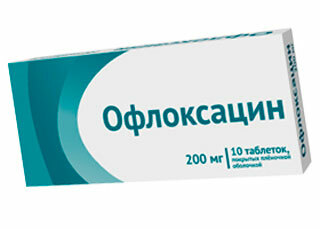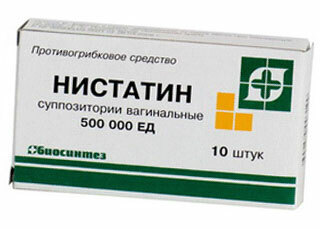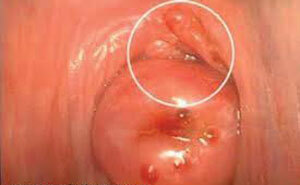One of the most common gynecological diseases is vaginitis. It is an inflammation of the vaginal mucosa that occurs as a result of the multiplication of pathogenic bacteria or changes in the hormonal background. In gynecology is often used and another name for vaginitis - colpitis.
The disease affects women of different age categories. His treatment has positive predictions, especially if you consult a doctor when the first symptoms appear.
Contents of
- 1 What is Vaginitis?
- 2 Symptoms of vaginitis
- 3 Treatment of bacterial vaginitis
- 4 Treatment of atrophic vaginitis
- 5 Vaginitis in pregnancy
- 6 Colpitis in men
Vaginitis, what is it?

Vaginitis is a reaction of the body to pathogenic irritants, which can be divided into two types:
- Bacterial vaginitis is an inflammation that is caused by the multiplication of pathogenic bacteria.
- Atrophic vaginitis is an inflammation that is caused by a change in the hormonal background.
Because the disease is widespread, its etiology is very diverse. The reasons for the development of vaginitis is important to find out mainly so that the doctor knows which bacteria triggered the beginning and prescribe the appropriate course of treatment.
Causes of bacterial vaginitis
- Sexually transmitted diseases( STIs);
- Too frequent immunosuppression;
- Irregular hygienic procedures of an intimate zone;
- Frequent change of sexual partners, sexual intercourse without the use of condoms;
- Prolonged use of antibacterial drugs;
- Hormonal failure;
- Allergy to soap, shower gels, bath foam, chemicals used for swimming pool water.
Causes of atrophic vaginitis
- Uncontrolled intake of hormonal agents;
- Chemotherapy and radiation therapy for oncological diseases;
- Natural decrease in the level of estradiol as a result of aging;
- Ovariectomy( removal of ovaries);
- Lactation.
Symptoms of vaginitis

Symptoms of bacterial and atrophic vaginitis are similar in many respects, despite the different reasons for their appearance, which makes it possible to make a general list:
- Reddening of the mucous membranes. It can be observed both on the external genitals and inside the vagina.
- Painful sensations when you touch the labia of your clothing, hands.
- Itching in the vagina.
- Swelling of the mucous membranes of the genital organs.
- The appearance of an unpleasant odor.
- Greenish discharge. If the case is triggered, they may be with a small amount of blood.
- Discomfort during intercourse and minor blood discharge during and after it.
- Burning sensation and tingling during urination.
- Inflammation of the urethra. Microcracks on the mucosa.
If you have any signs of vaginal vagina, you should contact your gynecologist. To diagnose the disease is simple enough - the doctor needs to take a smear and send it to the laboratory for bacteriological examination.
All vaginitis can be divided into two main types: specific and nonspecific. Depending on which of them carry the detected inflammation, certain treatment will be selected, aimed at eliminating the cause of the disease and its consequences.
Specific vaginitis - is characterized by the appearance in the microflora of the vagina of microorganisms, which there should not be even in the smallest quantities. These include gonococci, Trichomonas, pale treponema, chlamydia.
Nonspecific vaginitis - is characterized by excessive reproduction in the flora of the vagina of microorganisms that normally should be present in small amounts. This includes fungi of the genus Candida, human papillomavirus( HPV), staphylococcus, E. coli.
Treatment is prescribed depending on what type of vaginitis was diagnosed in the patient: bacterial or atrophic. If in one case it is necessary to identify the pathogen and pick up the drugs to eliminate it, then in another case, it is necessary to level the hormonal background, which will require much more time.
Treatment of bacterial vaginitis
 This kind of colpitis causes Escherichia coli, streptococci, staphylococci. Therefore, treatment of bacterial vaginitis should include the following drugs:
This kind of colpitis causes Escherichia coli, streptococci, staphylococci. Therefore, treatment of bacterial vaginitis should include the following drugs:
- Antibiotics: Amoxiclav, Vilprafen, Clarithromycin, Ofloxacin.
- Anti-inflammatory drugs: Ibuklin, Prednisolone, Terzhinan. Candles from vaginitis: Metronidazole, Klion-B, Ginalg.
According to the nature of the disease, bacterial vaginitis can have two forms:
1. Acute vaginitis - involves a clear manifestation of the symptoms of the disease, accompanied by a large number of secretions, severe itching and the appearance of a large number of microcracks.
2. Chronic vaginitis - suggests a latent course of the disease, which from time to time makes itself felt by the appearance of a small amount of secretions, odor, itching.
It is quite natural that in case of acute illness it is much easier to notice and diagnose vaginitis, since it is much more likely that a woman will consult a doctor.
A completely different situation with a chronic form: a woman may not notice the inflammatory processes for several years and discover their presence quite by accident at a gynecologist's appointment.
Treatment of atrophic vaginitis
 Because this form of the disease causes a change in the hormonal background, the treatment of atrophic vaginitis will be directed primarily at leveling the level of a hormone. In addition, against the background of pathology, other types of this disease often develop: candidiasis, trichomoniasis and chlamydial vaginitis.
Because this form of the disease causes a change in the hormonal background, the treatment of atrophic vaginitis will be directed primarily at leveling the level of a hormone. In addition, against the background of pathology, other types of this disease often develop: candidiasis, trichomoniasis and chlamydial vaginitis.
The cause of their appearance may be bacteria and fungi, which begin uncontrolled reproduction in the flora of the vagina with a decrease or excess of a hormone. Treatment of vaginitis includes the following:
- Hormonal drugs: their use will depend directly on the results of the hormone analysis, so there is no universal medicine in this case.
- Antifungal drugs: Nystatin, Flucostat, Fluconazole.
- Anti-inflammatory drugs: Hexicon, Polynynax.
Vaginitis in pregnancy
The appearance of colpitis during pregnancy can be due to the general weakening of immunity, and hormonal changes in the body of the future mother. The level of progesterone and testosterone naturally increase, the growth of hCG is added to them - all this can affect the violation of the microflora of the vagina.
However, treatment for pregnancy should be administered cautiously, given the time, as well as the condition of the mother herself. It is necessary to pay attention to the manifestation of the disease.
Since the body of a pregnant woman is often weakened, the vaginitis often takes an acute form, which requires immediate treatment, since there is a possibility of infection of the membranes.
Any universal method of treating colpitis in this case is difficult to advise, the most correct solution is the appointment of therapy by the attending physician, taking into account the individual characteristics of the condition of the woman and the period of her pregnancy.
Colpitis in men
Representatives of the male can be carriers of bacteria, causing colpitis in women. In particular, with specific vaginitis specialists insist on the treatment of both sex partners. However, colpitis in men, as such, does not occur.
Men also have inflammatory diseases of the genitourinary system, but they have very different names and a different flow pattern than women. Therefore, in medical encyclopedias, vaginitis is treated as exclusively a woman's disease.
Inflammation of the mucous membrane of the vagina and labia may cause discomfort and painful sensations. In addition, there is a danger that the infection will affect the urethra and rise up to the kidneys. Therefore, the treatment of vaginitis should begin immediately after the discovery of characteristic symptoms.



